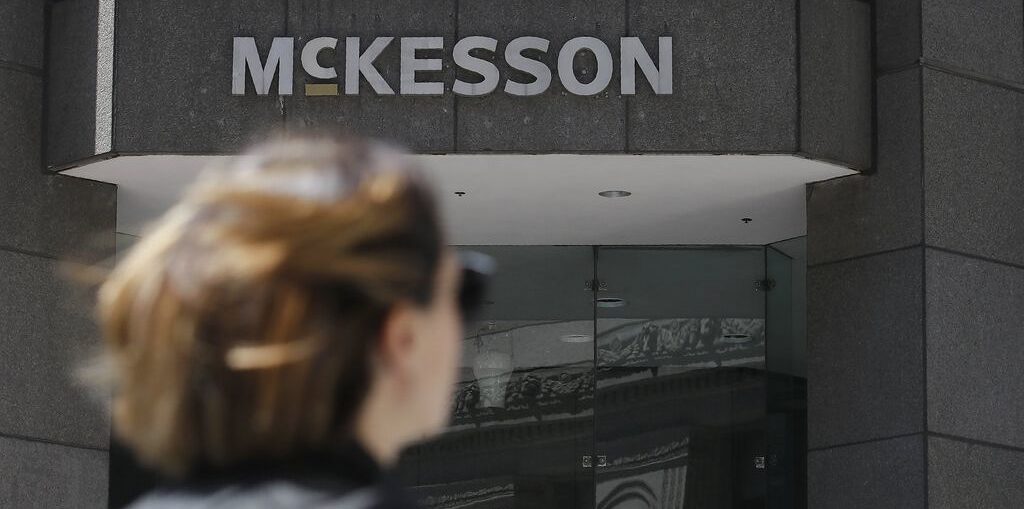
WASHINGTON — The maker of OxyContin has been forged because the chief villain within the nation’s opioid disaster. But newly launched authorities figures recommend Purdue Pharma had loads of assist in flooding the U.S. with billions of capsules at the same time as overdose deaths had been accelerating.
Records saved by the federal Drug Enforcement Administration present that 76 billion oxycodone and hydrocodone capsules — the overwhelming majority of them generics, not model names — had been shipped to U.S. pharmacies from 2006 to 2012.
The annual quantity swelled by greater than 50 % throughout that time frame even because the physique rely climbed. The highly effective painkillers flowed quicker even after Purdue Pharma was fined $635 million for falsely advertising OxyContin as much less addictive than different opioids.
“I think the scale of this is stunning,” Keith Humphreys, a Stanford University professor who researches opioids, mentioned in an interview.
He additionally famous that the info reveals that the locations that obtained essentially the most medication per capita are those with essentially the most overdoses per capita: “It really looks like wherever you spread the most gas, you get the most fires.”
At the identical time, the info illustrates how sophisticated it could possibly be for the courts to determine who must be held accountable for the general public well being catastrophe. More than 2,000 state, native and tribal governments have sued members of the drug business within the greatest and presumably most complex litigation of its sort ever within the U.S.
A federal decide who’s overseeing a lot of the circumstances and pushing for a settlement dominated this week that detailed drug-shipment information compiled by the DEA must be made public over the business’s objections.
The decide has not allowed the discharge of knowledge from 2013 and 2014. But the fabric unsealed constitutes essentially the most complete image but of how the disaster unfolded.
The Washington Post, which together with HD Media, the proprietor of newspapers in West Virginia, went to court docket to hunt the knowledge, was first to publish the info.
Prescription and unlawful opioids reminiscent of heroin and fentanyl have been elements in additional than 430,000 deaths within the U.S. since 2000, in response to the CDC. From 2006 to 2012, annual opioid deaths rose from underneath 18,000 a 12 months to greater than 23,000. During that point, pharmaceuticals had been cited as elements in slightly below half the deaths.
Since then, general opioid deaths within the U.S. have doubled, although on Wednesday the CDC reported that drug overdose deaths of every kind in all probability fell final 12 months for the primary time in almost three a long time.
The newly launched info reveals intimately the circulate of medication from producers to communities.
West Virginia, Kentucky, Tennessee and Nevada all obtained greater than 50 capsules for each man, girl and baby every year. Several areas within the Appalachian area had been shipped a mean of properly over 100 capsules per individual per 12 months.
“It’s like being on the front lines of a war every day,” mentioned Joe Engle, sheriff of Perry County, Kentucky, which obtained 175 capsules per individual per 12 months. “Our people here in eastern Kentucky have been taken advantage of by these pharmaceutical companies. It’s one of the worst things you can do to a society, to a people. And we’re suffering.”
Nearly each state has filed a lawsuit, and most of them have targeted on Purdue and members of the Sackler household, who personal the Stamford, Connecticut-based firm and are main philanthropists whose donations to museums and universities have now come underneath scrutiny. Many native governments have additionally sued different drugmakers, distribution firms and pharmacies.
The lawsuits say that with the introduction of OxyContin, a time-released opioid, in 1995, Purdue created a brand new playbook to push the usage of opioids for extra sufferers and in greater doses.
But Purdue factors out, precisely, that the corporate produced solely a small fraction of the nation’s opioids — about 3% between 2006 and 2012, in response to the info. Three firms — SpecGX, Par Pharmaceutical and…